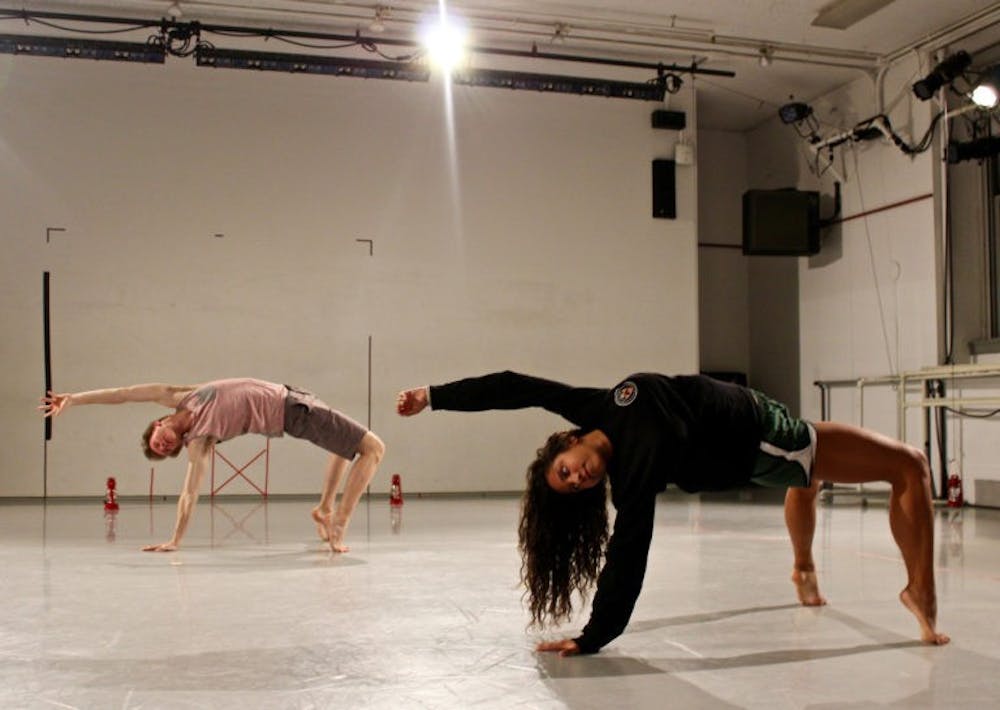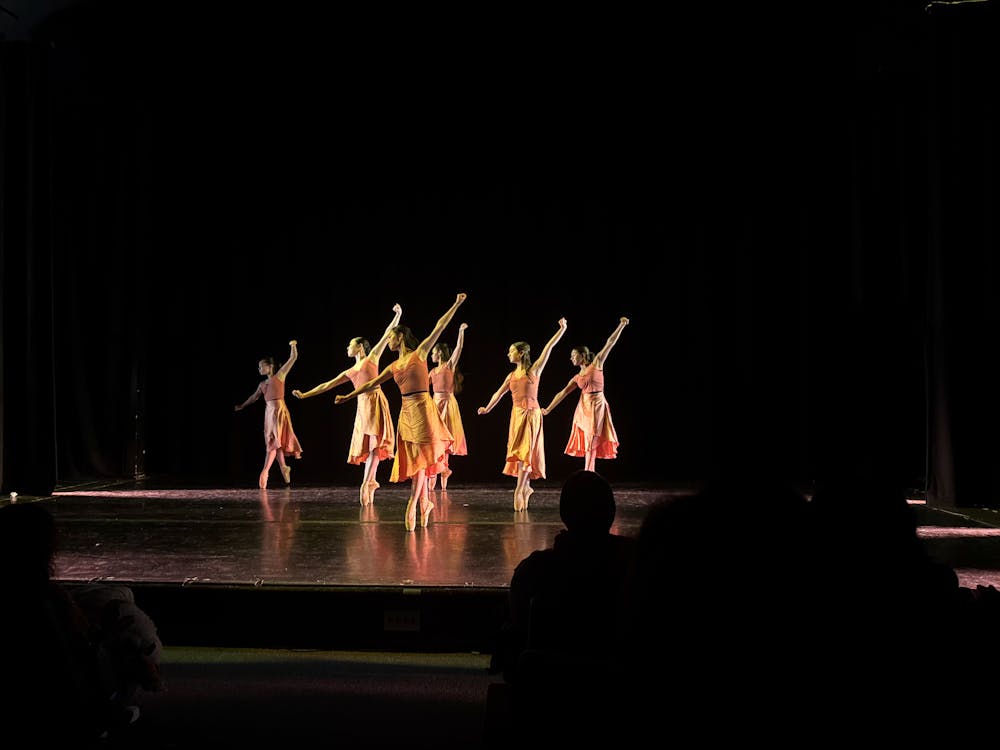Dance Festival 2016 Promo from Lewis Center for the Arts on Vimeo.
“It is one of our goals to offer our students a diverse range of dance perspectives and traditions to wrestle with physically and artistically,” said Susan Marshall, director and professor of dance at Princeton, in reference to the Princeton Dance Festival. This diversity of perspectives and traditions was most evident through the performance, which took place on Dec. 2, 3, and 4.
The Princeton Dance Festival, which featured almost 40 students, was comprised of three works from guest choreographers and three works by members of Princeton’s dance faculty as a component of the fall dance courses.
The show featured a wide array of performances, as many of the dances differed stylistically, musically, and thematically. In some of the works, dancers moved in unison, performing sharp, synchronized movements, while in others, dancers drifted in and out from structured, collective movement to free, individualized improvisation.
Lighting, live music, props, and costumes played crucial roles in various pieces as the dancers interacted with these elements in ways that framed and largely influenced the movement of the pieces. As Marshall noted, “In this year’s program the work of contemporary artist Olivier Tarpaga is deeply informed by West African music and dance, while the work of ballet and Broadway dancer/choreographer Francesca Harper builds on her history with innovative choreographer William Forsythe and involves segments of structured improvisation.”
The various forms and perceptions of movement explored by the Princeton Dance Festival are largely a reflection of the creative processes of the pieces, which seem to be embedded in a collaborative approach that breeds diversity and innovation.

According to Elena Anamos ’19, “Being a part of PDF has definitely changed the way I approach movement and choreography. It’s interesting to observe how a choreographer involves dancers in their creative process. A lot of the choreographers for this PDF show involved the dancers a lot — mostly through improvisation — and it was interesting to see the dancers’ individual styles affect how the pieces looked when they were finished.”
Anamos danced in guest choreographer Olivier Tarpaga’s piece, entitled “Fly like a butterfly, Sting like a bee.” The piece featured live music and hanging lanterns that the dancers began interacting with towards the end of the piece, causing the lanterns to swing and collide with one another as the movement and music grew and reached a climax.
In reference to what the process was like for Tarpaga’s piece, Anamos commented, “my choreographer had us each make our own phrase of movement and then he took the pieces he liked and added them into the dance so the finished product actually had a lot of movement that we made ourselves.”
Guest choreographer, Francesca Harper, arranged the piece “Skin Code,” which student Clark Griffin ’18 danced in. According to Griffin, the creation and rehearsal process was very interesting and collaborative. He noted that Harper “asked us to bring a piece of writing about some kind of adversity we faced about assumptions put on us.” Griffin adds that the movements in the final dance were based on the stories included in these writing assignments. “We took some of those gestures from those phrases and we matched them together,” he added.

Harper's process of choreography speaks to how many of the dances in the Princeton Dance Festival arose from discussion, experimentation, individualized reflection, and exploration of bringing the personal aspects of dancers together. “There’s more of a marriage between the choreographer’s and the dancer’s creative energies. It’s not so one-sided a lot of the time these days. The line between them [dancer and choreographer]is blurred more,” Griffin said.
In addition to choreography, innovation was also essential in the development of staging. Tina Fehlandt, dance faculty member, staged “Polka,” which was originally choreographed by Mark Morris in 1992. When staging the piece, Fehlandt posed the question, “how do you bring something forward and make it fresh and have meaning on, and for, a generation of people who weren’t born when it was created?” Through this question, Fehlandt highlighted the tension that exists between staying true to the original intention of the piece and making the dance meaningful to the people participating in the dance.
Although she staged a performance by someone else, Fehlandt said she preferred not to show her dancers videos of previous iterations, because she didn't want them to replicate it exactly the same. “I don’t show them the video until I’ve already taught them the movement and they’ve internalized it so that they can find a path to the movement themselves,” Fehlandt explained.
The Princeton Dance Festival exemplifies the way dance can function as an explorative and innovative endeavor. This is apparent in Harper’s piece when the dancers begin verbalizing phrases to accompany their movement. It is apparent in Fehlandt’s piece when the dancers perform sequences of unison movement, yet all project their own, slightly nuanced way of moving. It is apparent in Tarpaga’s piece when the dancers begin moving through and interacting with hanging lanterns, sharing the stage with live musicians.
As Marshall noted, the students “learn about artistic processes and innovation and the role of uncertainty in any creative undertaking.” A dance is a project with problems that are worked through accidents, failures, and collective problem-solving.
Shared Marshall, “The act of making a dance come together is an experience in moment-to-moment experimentation, evaluation, risk-taking, and discovery.”








